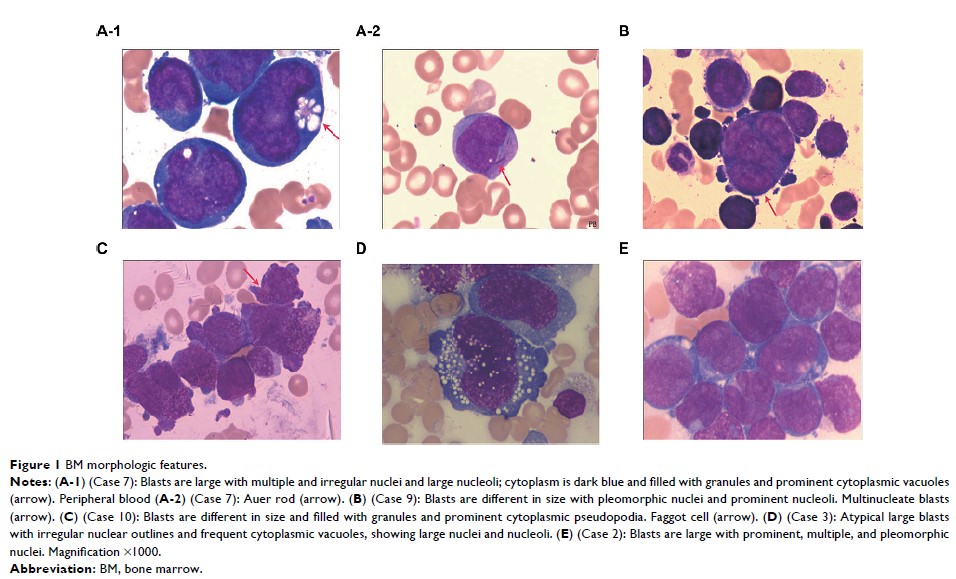9 0 5 7 8
论文已发表
注册即可获取德孚的最新动态
IF 收录期刊
- 2.6 Breast Cancer (Dove Med Press)
- 3.9 Clin Epidemiol
- 3.3 Cancer Manag Res
- 3.9 Infect Drug Resist
- 3.6 Clin Interv Aging
- 4.8 Drug Des Dev Ther
- 2.8 Int J Chronic Obstr
- 8.0 Int J Nanomed
- 2.3 Int J Women's Health
- 3.2 Neuropsych Dis Treat
- 4.0 OncoTargets Ther
- 2.2 Patient Prefer Adher
- 2.8 Ther Clin Risk Manag
- 2.7 J Pain Res
- 3.3 Diabet Metab Synd Ob
- 4.3 Psychol Res Behav Ma
- 3.4 Nat Sci Sleep
- 1.9 Pharmgenomics Pers Med
- 3.5 Risk Manag Healthc Policy
- 4.5 J Inflamm Res
- 2.3 Int J Gen Med
- 4.1 J Hepatocell Carcinoma
- 3.2 J Asthma Allergy
- 2.3 Clin Cosmet Investig Dermatol
- 3.3 J Multidiscip Healthc

通过荧光原位杂交法鉴定近三倍体/四倍体 - 急性白血病的染色体异常和基因组特征
Authors Yang R, Jiang M, Zhao J, Chen H, Gong J, You Y, Song L, Li Z, Li Q
Received 28 September 2018
Accepted for publication 27 December 2018
Published 15 February 2019 Volume 2019:11 Pages 1559—1567
DOI https://doi.org/10.2147/CMAR.S189025
Checked for plagiarism Yes
Review by Single-blind
Peer reviewers approved by Dr Justinn Cochran
Peer reviewer comments 3
Editor who approved publication: Dr Beicheng Sun
Background: Near-triploidy/tetraploidy
is rarely found in acute leukemia. Only limited data are available to
characterize this condition, and it remains largely unknown.
Patients and methods: In our
study, we performed karyotype analysis on 1,031 patients diagnosed with acute
leukemia from 2006 to 2018. A total of 10 patients of
near-triploidy/tetraploidy karyotype were enrolled. Two cases of near-triploidy
(66–79 chromosomes) and eight cases of near-tetraploidy (84–100 chromosomes)
were identified. Bone marrow samples of these 10 patients were analyzed by fluorescence
in situ hybridization with 19 commercially available probes that detected a
small portion of gene alterations and large regions of chromosome
amplifications.
Results: Of the
six patients with acute myelocytic leukemia, we detected three cases of double
t(8;21)(q22;q22) that have not been previously reported, and one of them
demonstrated ins(21;8)(q22;q24q22). We also describe a novel pediatric case
carrying double t(15;17)(q22;q21) and receiving targeted treatment with
all-trans retinoic acid therapy. To date, this case has responded well to the
regimen and has shown continuous complete remission. All patients received
chemotherapy. One of them received allogeneic hematopoietic stem cell
transplant (HSCT) and survived for 22 months. Eight of the 10 patients died,
and the median overall survival was 11 months.
Conclusion: Using
fluorescence in situ hybridization, we identified the distinct complex
karyotype of near-triploidy/tetraploidy and provided further prognostic
information. Tetraploidy acute promyelocytic leukemia had favorable prognosis;
thus, HSCT was not necessary. The case of insertion t(21;8)(q22;q24q22) in
tetraploidy responded poorly to chemotherapy and achieved molecular remission
with difficultly. Data from patients in this group indicated that
near-triploidy/tetraploidy acute leukemia has poor prognosis and new therapy is
urgently needed.
Keywords: near-triploidy,
tetraploidy karyotype, acute leukemia, fluorescence in situ hybridization, gene
